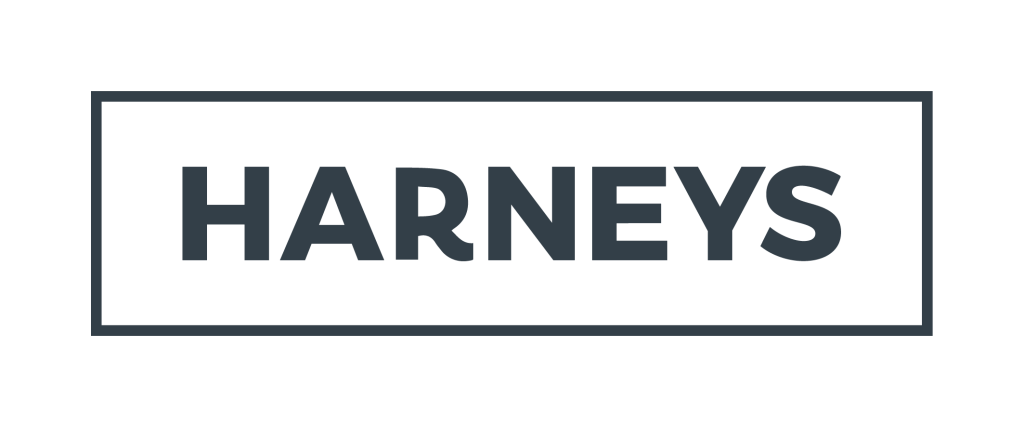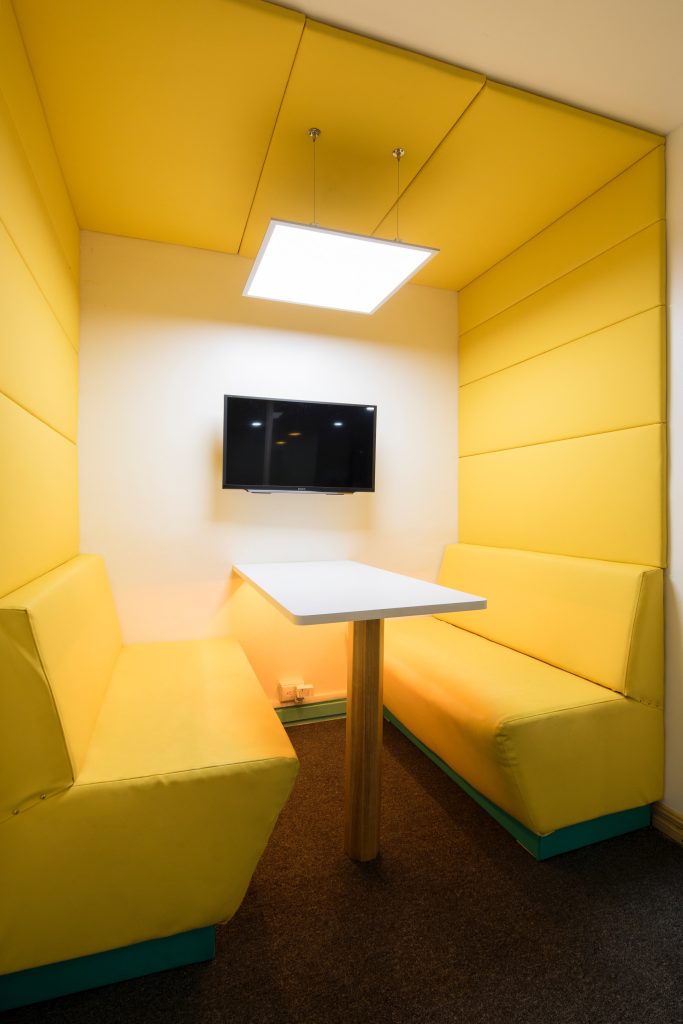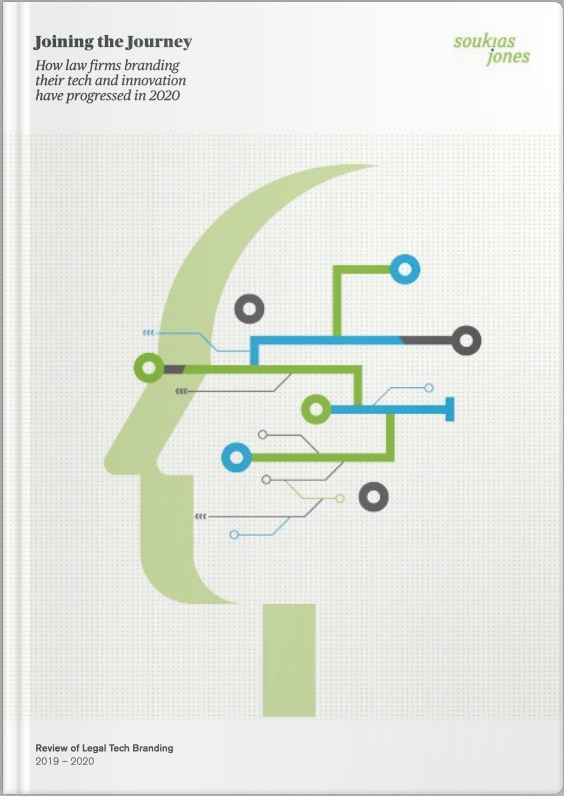Issue 8 – Autumn 2022

News and Views on branding tech and innovation by law firms
News
New brands and refreshed ones.
Firms have been busy introducing new brands and revitalising others to help strengthen their positioning. Here are a few recent examples:

Heritage for innovation at Harneys
Some firms fail to dig deep to find anything compelling about what innovation means to them and default to generic claims like “Innovating to serve our clients better”.
Leading offshore firm Harneys, however, does have a story to tell. For over 60 years the firm has been a pioneer, helping to establish milestone pieces of legislation in the British Virgin Islands (BVI). This spirit has helped drive the firm to ensure its clients stay ahead of the game. As the firm remarks, “With a long pedigree of game-changing industry firsts, our culture of relentless innovation continues to power our work”. The firm has recently launched a suite of digital products, and has developed a dedicated section to Innovation and Technology on its website.
No doubt as the firm continues to evolve to support its clients and their evolving needs, the firm’s curious way of thinking will too. As the firm remarks, “The new normal is more unpredictable than ever before. Because of this, we don’t have a fixed mindset. Instead, we stay agile and flexible, pivoting to practical solutions as change happens and as new challenges emerge.”
The overall approach helps give the firm a distinct story to tell with a clear theme connecting past, present and future. Certainly more compelling than some of the more generic efforts.

ClearyX launches
ClearyX is a bold new subsidiary and sub-brand from Cleary Gottlieb, one of New York’s most elite law firms.
It’s bold in at least two ways: first, by moving outside the walls of its existing LLP, the firm is acting on its belief that real disruption is more likely to be achieved by building a new business model. Second, ClearyX will focus solely on efficiency-driven transactional legal work. Described as “an experimental platform wholly owned by Cleary Gottlieb Steen & Hamilton LLP,” its fully remote team is “designed to reimagine how transactional legal services can be delivered using unique combinations of people, process and technology”.
Slightly less bold is its actual brand identity. This uses the Cleary name to leverage the reputation of a premier law firm: it’s certainly not going for the Silicon Valley cool-start up image. Even so, shortening the name, using a more stylish font and sentence case, and adding ‘X’ pushes the identity far enough from the corporate brand to be distinct. Moreover, deploying the Cleary look to leverage opportunities with existing clients doesn’t stop the sub-brand achieving a tech feel.

Features
To the power of X
Also using X in its name is MdRxTech. Which prompts the question: why X?
In the tech world, this letter has come to mean so much, even as more frequent use reduces its traction for meaning. Consider your smartphone: an iPhone X? Ever since X-ray goggles and Generation X, the X factor (despite the show) has been used to denote cool. HarvardX is “a bold experiment to push the boundaries of learning through reimagined teaching, unprecedented research and cutting-edge technology”. Crypto has its own XBT.
Why has X has found its way into the identities of many companies and products? Why does X signal special qualities (and the perception of being on the cutting edge)? There are many reasons, some pertinent to tech. Importantly, in algebra, x represents an unknown quantity or variable. X is the unknown extra – a value-add that the company in question can provide.
X is protean, too. In branding, shorthand is everywhere, and X is a short form for several words: experimental, for example. Companies use it to name their most innovative projects (the US Marine Corps commissioned the helicopter marine experiment HMX-1 to develop passenger helicopters for military use). Exploration also has the X factor (SpaceX is short for Space Exploration Technologies Corp), while UX is a well-known acronym for User Experience (just as LX Studio signifies innovation in legal experience).
In pursuit of differentiation, brands use names as an opportunity to break with convention. Elon Musk, who has always looked and acted like a disrupter, called his cool electric car Model X and even carried this through in his personal life (a baby with an as-yet unknown personality needed the X factor, or X Æ A-12). A trend to be followed? Watch this space.

60 seconds with Antonia James, Director of Client Relations, VWV
Back in 2021, VWV launched VWV Plus. Here we ask Antonia to share her insights on the background to VWV Plus and some of the challenges Antonia and her team faced when developing a culture committed to innovation.
Brandtech: What was the thinking behind having a sub-brand (VWV Plus) for your range of digital solutions and products?
Antonia: Our initial products and solutions weren’t regulated activities. For commercial reasons we opted to have a separate subsidiary from the LLP. We started using My OnStream in 2017. This was quite a unique approach and caused some hesitancy from a few of our Partners. Having a sub-brand gave them some comfort, it was an easier exit strategy should we need it.
We confidently re-branded to VWV Plus in 2021. This was largely in response to client feedback – they wanted the comfort of knowing it was part of the VWV Group and so using VWV within the brand name, helped to give that alignment and reassurance.
Brandtech: What difference has it made to surface your capabilities on a dedicated website?
Antonia: Our aim was to ensure we were agile in our approach to developing. We endeavoured to have a start-up mindset, mindful we had day jobs in the LLP, and so having a new custom site enabled us to be clear with our messaging and ultimately provides greater flexibility in evolving designs at pace.
We’ve also been able to influence the engagement and mine the analytics more easily. User engagement videos, analyse scroll depth and heatmaps have supported our page design to encourage conversions.
Brandtech: Partner engagement is key to identifying opportunities and selling to clients. What are some of the techniques that you have used to win hearts and minds?
Antonia: We’ve worked with our Partners to understand how they are supporting their clients and where we have the opportunity to embrace technology to create efficiencies in the way they work, solve problems and/or add more value. Our focus is always to provide an excellent client service to embed loyalty.
We also identified the key influencers, for example Head of Sector and then worked with them to help gain engagement from the wider Partner group.
We conduct regular internal marketing for example, videos, newsletters, know-how sessions, focus groups, and created clubs (coding and video production being the most recent). In our updates we publish key statistics and metrics to ensure that we take everyone on the journey with us. Partner-led referrals are by far the best introductions, so we purposefully publish these as case studies.
We also have a Sales Manager and more recently a Sales Executive. The Partners have built a confident and trusted relationship with them and so now refer their clients for VWV Plus products. In return, the sales team refer any complex advisory work/questions back to the legal teams so they see the value of engaging with VWV Plus.
Brandtech: What is your vision for VWV Plus? (where would you like be in 5 years, what will it be providing?)
Antonia: Our vision for VWV Plus is to continue to grow our engagement, both internally and externally.
We recognise that the skillsets needed now and in five years’ time are likely to be very different. With that in mind, we want to help our lawyers and our clients to navigate that path by demonstrating forward thinking and providing a vehicle to experiment and learn.
We run 12 month planning cycles focussed on people, process and technology. It’s therefore hard to say what we will be providing specifically in five years’ time, however I would envisage it will be a suite of products, free and paid-for, across a range of sectors and in collaboration with others.
Brandtech: For anybody about to start an innovation programme, what would be your top tips for success be?
Antonia: Surround yourself with colleagues from a range of backgrounds who bring different experiences and skillsets. It helps if they like to embrace change and see the opportunity in it, rather than the risks, at first.
Ensure the programme has senior leadership support, ideally financially, but definitely emotionally.
Don’t aim too high too fast. Small steps and take as many on the journey with you as you can (internal marketing).
Be patient and remember that change is incremental. Ensure it is a team effort, you can’t be responsible for delivering it all.
It won’t always be easy to measure your impact or value, so it’s important to be resilient and remember to remind yourself of your north star regularly so as not to give up.

What’s happening below £100m?
Most firms with annual turnover of £100 million and above are developing their capabilities within innovation and technology and talking about them, too (up to 77% from our research – 34 firms from a total of 44). But what about firms below this threshold – how do they shape up?
We reviewed the websites of 67 firms with revenues of between £25 million and £100 million (source: The Lawyer Top 200 UK Law firms, 2020). Of these, fewer than 22% (a total of 15 firms) list their tech credentials. Seventy-eight percent of firms (52) say nothing at all publicly about tech.
Why the silence?
Perhaps small to mid-sized firms are talking about tech in their tenders and presentations, but for now most are keeping tight-lipped about credentials on their websites. Why?
Some simply don’t have anything to say. Lacking resources and client appetite, these firms don’t make innovation and technology a business priority, so have no story to tell.
In contrast, others have developed their capabilities but don’t yet see the need to say anything publicly. Deborah Fleming, Walker Morris’s marketing and business development director, sums up the approach as follows: “We’re doing stuff, but people don’t consider it newsworthy. A perception that a lot of it is ‘smoke and mirrors’ causes reluctance – even as a point of integrity – to shout about it.”
Others cite differing priorities. Martin Palmer, who occupies the same BD and marketing role at Clarke Willmott, explains: “We focus our content on the topics that are featuring in search and that match our own keyword/key topic strategy.” The firm has capabilities but prefers to be selective about who it tells, he says. “On other channels we do talk about these capabilities, particularly in tenders where there is often a specific are of interest.”
In sharp contrast, some firms do see strategic value in talking publicly about innovative measures and technology. Leading the cause, TLT have developed an impressive content hub featuring its approach, products, insights and people. Clearly it helps that the firm has five legal tech products to talk about. It has the substance to help shape perceptions. VWV has gone one step further in this. The firm developed its own sub-band (VWV Plus) with its own website to evidence its commitment. Foot Anstey has also developed its own sub-brand Foot Anstey Ingenuity.
Other firms have also shown this commitment with varying degrees of authority and surfaced their approach and solutions (Brodies, Burness Paull, Cripps, Freeths, Ince, Keoghs, Keystone, Lewis Silkin, Plexus, Shepherd & Wedderburn, Wedlake Bell and Wiggin).
By surfacing capabilities in this way, firms are keen to exhibit modern, progressive characteristics, and prove themselves in touch with the evolving demands and behaviour of clients. Such an approach to external communications also implies proactive approach to internal education and engagement. Getting partners on board is a key ingredient for success. Building this brand halo is also useful for recruitment and retention, showing how forward-thinking firms reshape themselves around new skills and talents to deliver the practice of law more effectively.
Tech has undoubtedly given small to mid-sized firms more leverage to compete for work that traditionally has been done by larger firms. Understanding that tech is an opportunity is just the start. Internal and external communication is a vital next step.
For fuller coverage of the findings, download a copy of our report.

Showcasing technology
As firms adapt workspaces to match requirements for hybrid working, there is no better opportunity to showcase their approaches towards technology and innovation. Providing a tech-enabled experience is part of developing a firm’s positioning and culture of innovation. This starts with making the right impression with clients and new recruits in the reception areas and continues through the design of office spaces to prioritise flexibility and agility.
New economic realities and evolving technologies are leading firms to reimagine the types and qualities of spaces they need. Making such space conducive to teams and collaboration while promoting well-being, sustainability and a digital-first image is driving decision-makers to think differently. Sweeping advances in display and mobile technologies make it possible to create workplaces, office buildings and corporate campuses that offer dynamic, flexible experiences which can connect employees and engage visitors as never before.
Increasingly, firms recognise this. Osborne Clarke, which leads in technology and life sciences, is using its new Bristol offices to showcase its credentials while also encouraging creative thinking and collaboration.
Allen & Overy designed a new space for Fuse, its legal tech incubator, to enable lawyers to engage and interact with technology in a new and different way. “When you enter Fuse, you don’t feel like you’re walking into a law firm – rather, you get the very real sense that this is a creative environment where legal technologies of the future are being developed,” says the firm. Jump Studios, the architectural practice, comments: “Increasingly, we see companies looking to gain more value from their workspaces by hosting alternative spaces which nurture and support innovation and collaboration with both internal and external stakeholders.”
Excellence in the client experience is underpinned by excellence in the digital experience. The workspace is a perfect setting for getting this right.

To sub-brand or not to sub-brand?
The summer before the pandemic, we reported the launch of three independent brands from global firms within a few days. These were Recurve (Greenberg Traurig), Konexo (Eversheds Sutherland) and BCLP Cubed (Bryan Cave Leighton Paisner).
A definite pattern was emerging: firms creating separate brands and sub-brands to represent their mixes of products, services and solutions. Three years later, we thought we’d go back to assess whether firms are still following this trend.
BCLP Cubed is no longer, becoming subsumed in BCLP’s’ transformation programme Project Advance, with its capabilities merged with others in the firm. Recurve is still going but (judging by its limited LinkedIn posts) not very active. Konexo, meanwhile, is going strong.
Another independent brand launched at that time was Condor (part of Fieldfisher). It recently had a makeover and is now visually more aligned to Fieldfisher. Another stand-alone brand, Vario (for Pinsent Masons’ flexible resourcing services), is now part of the corporate brand and has become an umbrella for its broader range of professional service offerings.
Kennedys, Foot Anstey and VWV (Kennedys IQ, Foot Anstey Ingenuity and VWV Plus) have launched new sub-brands. Several others launched new offerings (using their existing corporate identity). Macfarlanes’s LawTech and DLA& are examples. A few have revitalised their positioning, including Addleshaw Goddard’s Law, Plus More, TLT’s FutureLaw, DWF’s Connected Services and Simmons & Simmons‘ Solutions. The magic circle firms remain steadfast behind their corporate brands however.
What does this tell us?
Firms still see merit in leveraging the power and association of corporate brands for premier legal services. Understandably, they are reluctant to give this up. In the eyes of general counsel and in-house teams, a reputation for quality legal services bestowed by an established firm is a powerful asset. But it remains this only so long as that firm evolves at pace its capabilities and culture to satisfy the evolving needs of GCs and in-house teams.
The market for the business of law is in flux. Law firms need to demonstrate the same agility in how they shape their response, and configurate their brands. One thing is for certain, the landscape will certainly be different in another three years time!

About
Read our new report
How law firms branding tech and innovation have progressed in 2020
Back in June 2019, we published our review ‘How law firms brand innovation and lawtech’. As 2020 closed, we decided to take another look at where firms are on their branding journey. We found:
- 60% of firms (Top 30 UK law firms) now use sub-branding to package their New Law solutions;
- 33% of firms include on their websites little or no reference to innovation and lawtech; and
- 66% of firms in the Top 30 to 60 have little or no reference to these on their websites.
For a free copy of our review ‘Joining the Journey: How law firms branding tech and innovation have progressed in 2020.’ Click here
Contact us
Perhaps your existing strategy is underperforming and failing to deliver results. Do you need help branding your tech?
Set up a no-obligation call with out branding expert, Grahame Jones


